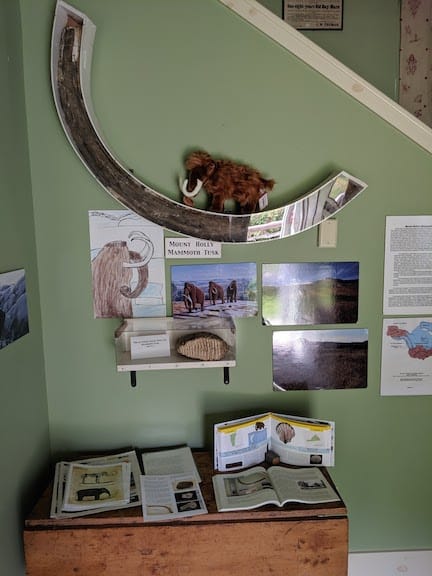
MOUNT HOLLY, Vt. – The bones of the world’s first identified wooly mammoth discovered in North American were first discovered in Mount Holly in 1848. Now, a fragment of one of those bones has been carbon-14 dated, proving conclusively that the Mount Holly wooly mammoth lived during the same time period that early humans populated the area – although absolute proof of their interaction at the Mount Holly site is still being researched.
Dartmouth College archeologist Nathaniel Kitchel recently published a paper providing conclusive carbon-14 dating of a rib bone fragment found from that first Mount Holly wooly mammoth skeleton that has been housed on a shelf at Dartmouth’s Hood Museum all these years. This is the first successful carbon-14 dating of the Mount Holly wooly mammoth. The research determined the creature died between 12,882 and 12,792 years ago, the same time period that archaeologists have identified human settlements around this general region, largely through shaped or grooved points made of stone.
In late January of this year, a team of eight scientists visited the Mount Holly bog using ground-penetrating radar in hopes of proving interaction between the wooly mammoth and early humans by identifying footprints or other bones that could be brought up through a drilled core. So far, however, there is no conclusive proof, although that data is still being processed.
According to Kitchel, “To date no conclusive evidence of human activity has been identified, by my team or anyone else, in or around the Mount Holly site. During the GPR survey, we did note several ‘anomalies’ at the bottom of the bog, but these could be any number of things…The data produced by the GPR instrument are still being processed so it is even more difficult to understand that the instrument was picking up in those scans.”
The team does plan to return to the bog site to learn more.
Jim Corven, a former member of the Mount Holly Community Historical Museum Board, helped the Dartmouth team to coordinate their research in January. According to Corven, the acidic soil in the New England “eats bones alive,” one of the reasons there has been no early human bones discovered nearby. Bones are protected in a bog, however, and researchers are returning to these wetlands to discover more. “This special site can preserve things from several thousand years ago,” Corven said.
The original mammoth tusks are on display at the Mount Holly Community Historical Museum, as well as a cast of the molar tooth, the rib, and several other mammoth bones. For more information, visit www.mounthollyvtmuseum.org.
Updated March 19, 2021: The mammoth tusk was discovered in 1848, not 1868.